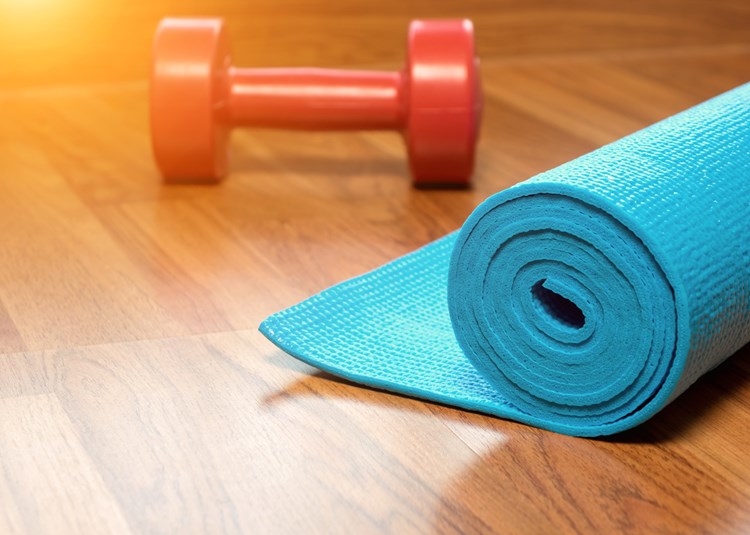It has happened to many of us: you cough, sneeze or laugh and suddenly feel that unique sensation of a bladder leak. The makers of incontinence products would have us believe that small bladder leakages are normal and manageable. This may be, but most people feel embarrassed and uncomfortable if they experience leakage, and no one enjoys planning outings around bathroom locations. Fortunately, there is a simple, drug-free way to prevent and manage urinary incontinence (UI).
What Is Urinary Incontinence?
Urinary incontinence occurs when a person experiences small amounts of urine leaking from the bladder. There are different kinds of UI, each with different causes. For example, stress incontinence is caused by coughing, laughing, jogging, and even lifting items. Urge incontinence occurs when a person really needs to go to the bathroom and cannot get there in time.
“For many women, these symptoms occur because of weak pelvic floor muscles, and, like any muscle in the body, these can be strengthened with proper training,” says Kim English, BScN, MN, a professor at the Trent/Fleming School of Nursing in Peterborough, Ontario, Canada.
The Importance of Pelvic Floor Muscles
Pelvic floor muscles hold the pelvic organs in place. These organs include the bladder, small intestine and rectum, as well as the uterus for women. “In addition to supporting organs, these muscles also play a crucial role in their function,” explains English. “When these muscles weaken, you’re more likely to experience symptoms such as urinary or even fecal incontinence.”
These muscles can be weakened by a number of things, but the most common reason in women is pregnancy and vaginal childbirth. Incontinence can result since the muscles of the bladder and supporting organs become stretched and are no longer strong enough to prevent leakage. Other causes include surgery, natural aging, straining from chronic constipation, and being overweight.
How to Do Kegel Exercises
There is a fairly standard approach to strengthening these muscles, and English explains them in detail:
- It is important to always have an empty bladder when doing these exercises.
- The first step is to understand exactly where your pelvic muscles are. You should focus on the muscles that you use to stop your flow of urine, so think of the sensation and areas engaged when you really have to urinate but are unable to get to a bathroom. Those are the muscles that you want to target in these exercises.
- Squeeze these muscles, hold for about 3 seconds and then relax for 3 seconds. The goal is to do this exercise without using the stomach, thigh, back or buttock muscles. In fact, the movement should be so slight that you can do these contractions in the presence of others without them knowing.
- You should repeat this process about 10 to 15 times to complete one set and aim for three sets a day. Since they are so subtle, you can do them anywhere. If you have a few minutes while you are waiting for the bus, go for it!
- Do not perform these exercises while urinating. Stopping and starting urination can be a useful tool for initially discovering and isolating these muscles, but doing so repeatedly might cause urine to get “trapped” in the bladder and ultimately lead to a urinary tract infection (UTI).
- Don’t overdo it. Start slow in order to avoid fatiguing these muscles. Overworking them will only worsen your symptoms.
- While there are products you can buy that claim to improve the outcome of your Kegel routine, they really aren’t necessary. If you are having trouble locating the muscles that you need to target, a physician may recommend using weighted vaginal cones or even undergoing biofeedback training. Otherwise, no special equipment is necessary.
Benefits of Kegel Exercises
Women can do kegels at any age. The greatest benefit is a reduction in incontinence, but improving the muscles in your pelvic floor also strengthens your core, or your abdominal girdle. “A stronger core makes for a stronger body as a whole,” English notes. “There are also some benefits when it comes to sexual function, which is an added bonus!”
Furthermore, kegeling can help to prevent other disorders like pelvic organ prolapse (POP). “POP occurs when the pelvic floor loses its integrity due to things like menopause, obesity, childbirth, injury or hysterectomy, and organs begin to descend into abnormal positions, causing serious urinary, digestive and sexual problems,” explains English. The aging process can also be to blame, since connective tissues lose their integrity and muscles lose their tone over time. It is estimated that half of all women over age 50 experience some degree of POP, and many women must undergo surgical procedures to correct it.
Men Can Do Kegels, Too
These exercises are not just for women. Male anatomy is different, of course, but men have the same pelvic floor muscles that help to regulate urinary and bowel activity. Men may experience weakness and leakage due to treatments and surgeries for prostate cancer, diabetes or overactive bladder (OAB).
“Believe it or not, kegel exercises for men use the same instructions listed above!” English remarks. In addition to targeting muscles used to start and stop the flow of urine, men may also find it helpful to think of those used to avoid passing gas when performing these exercises.
A Routine Is Key to Reaping the Benefits
It is important to make these exercises a regular part of your day in order to maximize the benefits, but unlike traditional exercises, you can perform kegels anytime, anywhere. Once you get the hang of which muscles to target, you can do these at your desk, in the car, while waiting in line at the grocery store or while watching TV.
Kegeling can help improve urinary control in men and women, but it can take a few weeks or months to see an improvement. Even if you do not experience significant progress, keep in mind that these exercises will definitely help to prevent incontinence and other conditions from worsening. If you’re looking for additional options that can help strengthen the pelvic core, try adding an exercise program like Pilates or yoga to your routine.
For caregivers who are currently helping loved ones manage incontinence and have firsthand experience with the life-changing effects of this condition, this is a great opportunity for you to be proactive about your own health. It may also be worth asking your loved one’s doctor if they could benefit from pelvic floor muscle training as well.

